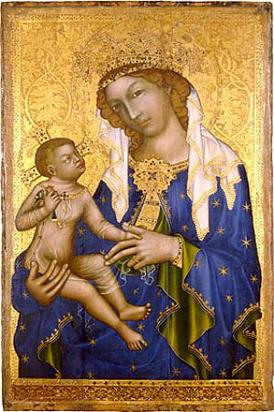 Living and dying in Christ in 2009 was way too common.
Living and dying in Christ in 2009 was way too common.
Especially the dying part. Pope
Benedict’s Christmas homily notes that “The Church everywhere proclaims the
Gospel of Christ, despite persecutions, discriminations, attacks and at times hostile
indifference. These, in fact, enable her to share the lot of her Master and
Lord.” Many of the 37 people killed this past year met hostility for their
acceptance of Christ as Savior, others were easy targets because they were
priests or nuns or in some way connected with the Church. Being killed for
being Christian is not the same as saying the 37 were martyrs for the faith.
Some may be legitimate martyrs, but not all.
Those who died:
Fr Joseph
Bertaina, of the Consolata Missionaries, killed January 16, 2009, Langata,
Kenya
Fr Eduardo de la Fuente Serrano, 61, killed February 14, 2009, Havana,
Cuba
Fr Juan Gonzalo Aristizabal Isaza, 62, killed February 22, 2009, Medellin,
Colombia
Fr Daniel Matsela Mahula, 34, killed February 27, 2009, Jouberton,
South Africa
Fr Lionel Sham, 66, killed March 7, 2009, Mohlakeng, South Africa
Fr
Révocat Gahimbare, killed March 8, 2009, Karuzi, Burundi
Fr Gabriel Fernando
Montoya Tamayo, 40 & Fr Jesús Ariel Jiménez, 45, Redemptorists, killed
March 16, 2009, La Primavera, Colombia
Fr Ramiro Luden, 64, killed March 20,
2009, Recife, Brazil
Fr Lorenzo Rosebaugh, 74, Missionary Oblates of Mary
Immaculate, killed May 18, 2009, lta Verapaz, Guatemala
Fr Ernst Plöchl, 78,
Congregation of the Missionaries of Mariannhill, killed May 31, 2009 Cape
Province, South Africa
Mr Jorge Humberto Echeverri Garro, 40, killed June 11,
2009, Colonos, Panama Arauca, Colombia
Fr Habacuc Benítez Hernández, 39, and
Seminarians Oregon Eduardo Benitez, 19, and Silvestre Gonzalez Cambron, 21,
killed June 13, 2009, Tierra Caliente, Guerrero, Mexico
Fr Gisley Azevedo
Gomes, 31, Congregation of the Sacred Stigmata of Our Lord Jesus Christ, killed
June 15, 2009, Brazlandia, Brasilia
Fr Mariano Arroyo Merino, 74, killed July
13, 2009, Shrine of Our Lady of the Rule, Cuba
Mr Ricky Sukaka Agus, 27,
Caritas worker, killed July 15, 2009, Musezero, North Kivu, DR of Congo
Fr Mukalel James, 39, killed July 30, 2009, Mangalore, Karnataka,
India
Fr Leopoldo Cruz, Redemptorist, killed August 24, 2009, El Salvador
Fr
Cecilio Lucero, Filipino, 48, killed September 6, 2009, Northern Samar
province, Philippines
Fr Roger Ruvoletto, 52, Fidei Donum missionary, killed September
19, 2009, Manaus, Brazil
Fr Evaldo Martiol, 33, killed September 26, 2009,
Santa Caterina, Brazil
Fr Danilo Oscar Cardozo 57, killed September 27, 2009,
Villavicencio, Colombia
Mr William Quijano, 21, Community of St. Egidio in El
Salvador, September 28, 2009, Apopa, San Salvador
Fr Edward Hinds, 61, killed
October 24, 2009, Chatham, New Jersey
Fr Louis Jousseaume, 70, killed October
26, 2009, Tulle, France
Sr Marguerite Bartz, 64, Sisters of the Blessed
Sacrament, killed October 31/November 1, 2009, Navajo, New Mexico
Fr Hidalberto
Henrique Guimaraes, 48, killed November 7, 2009, Maceió, Brazil
Fr Miguel Angel
Hernandez, 45, Capuchin Franciscan, killed November 8, 2009, Ocotepeque
Honduras, and found dead in a province of eastern Guatemala
Fr Jean Gaston
Buli, killed on November9/10 2009, Bunia, DR of Congo
Fr
Daniel Cizimya Nakamaga, 51, killed December 6, 2009, Kabare, DR of Congo
Fr Louis Blondel, 70, Missionaries of Africa, killed December
6 /7, 2009, Pretoria, South Africa
Sr Denise Kahambu Muhayirwa, 44,
Trappistine, killed December 7, 2009, Murhesa, DR of Congo
Fr
Jeremiah Roche, Society of St. Patrick for Foreign Missions, killed December
10/11, 2009, Kericho, Kenya
Fr Alvino Broering, 46, killed December 14, 2009,
Santa Catarina, Brazil
Fr Emiro Jaramillo Cardenas, 73, killed on December 20,
2009, Santa Rosa de Osos, Columbia
We are never very far from offering our
lives for Christ. The day after Christmas we observe the feast of the first
martyr, Saint Stephen, a deacon and one of the seven chosen to serve the
Church. In his Angelus address Pope Benedict recalled for us that
Stephen’s
witness, like that of the Christian martyrs, shows our fellow men and women, so
often distracted and disoriented, in whom they must place their trust in order
to give meaning to life. The martyr is, in fact, the person who dies in the
certainty of being loved by God and, placing nothing before love for Christ,
knows he has chosen the better part. Fully identifying himself with the death
of Christ, he realizes that he is a life-giving seed that opens the way for
peace and hope in the world. Today, presenting us St. Stephen the Deacon as a
model, the Church is also showing us that acceptance and love for the poor is
one of the privileged ways to live the Gospel and to bear credible witness
before the world of the Kingdom of God that is to come. (Angelus, December 26,
2009)







